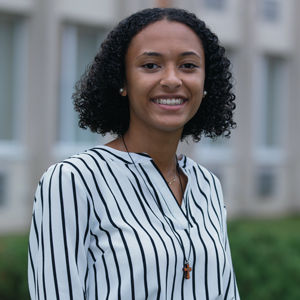Pandemic exacerbates educational inequities
Published April 23, 2020
In August 2018, I began a yearlong program called the High School Leadership Program at Cultural Leadership, an organization that focuses on understanding cultural differences and injustices through Jewish and African American lenses.
Over the course of my year in the program, we learned about African American and Jewish alliances throughout history and how many Jewish communities have committed themselves to activism. I was lucky to learn about this history through Cultural Leadership in a year unmarked by disease.
My time with Cultural Leadership has taught me to always consider the effects of large issues on marginalized communities. When St. Louis initiated a stay-at-home order March 23, a lot of things changed. Nonessential businesses were forced to close, and we were all told to stay inside our homes. Many professionals began conducting online meetings, while others lost their jobs. With all of these things changing, and changing quickly, I have noticed one thing remaining the same: The coronavirus pandemic’s negative effect on marginalized communities and, especially, marginalized students.
ADVERTISEMENT
Because of classes moving online, it has become essential for a student to have access to the internet. Without internet access, it is nearly impossible to complete assigned work and attend virtual classes.
According to a survey conducted by the National Telecommunications and Information Administration (NITA) in 2017, 14% of school-age children in the United States do not have internet access. Of these students, 60% came from families with household incomes under $50,000 per year. In contrast, 92% of students from households with family incomes of at least $100,000 per year had internet access. Black and Hispanic children were also more likely to lack internet access than their white and Asian American peers.
The most troubling part of the survey is that it took into account only how many students have internet service at home; it did not account for how many students have access to a computer. With computers costing hundreds and up to thousands of dollars, low-income students are at a further disadvantage.
ADVERTISEMENT
Because virtual learning is for now the only possible route of education, it puts additional stress on low-income households, a population largely consisting of people of color. In 2017, the U.S. Bureau of Labor Statistics reported that blacks and Hispanics were twice as likely to live in poverty than whites.
With low-income families of color disproportionately affected by the pandemic, it is important to me to constantly remind myself of how privileged I am. Both of my parents still have their jobs and have fluidly switched from driving to work every day to working from home. I have access to a personal laptop, and I have a secure roof over my head. In light of this pandemic, these are not things to take for granted.
Many people across St. Louis and the country are struggling to stay afloat.I am grateful to live the life I lead, and I feel duty-bound to advocate for marginalized communities facing injustice. I draw upon my Cultural Leadership training to actively involve others in speaking out against injustice and hope that those in positions of privilege use their voices to advocate for those who may be unable to speak for themselves.
Leyla Fern King is a junior at John Burroughs School and a member of Ascension Catholic Church. Leyla is an alum of Cultural Leadership’s High School Leadership Program, Class 14.
APPLY FOR CULTURAL LEADERSHIP: Applications are open for Cultural Leadership’s 2020- 2021 High School Leadership cohort at culturalleadership.org. High school freshmen and sophomores may apply.















